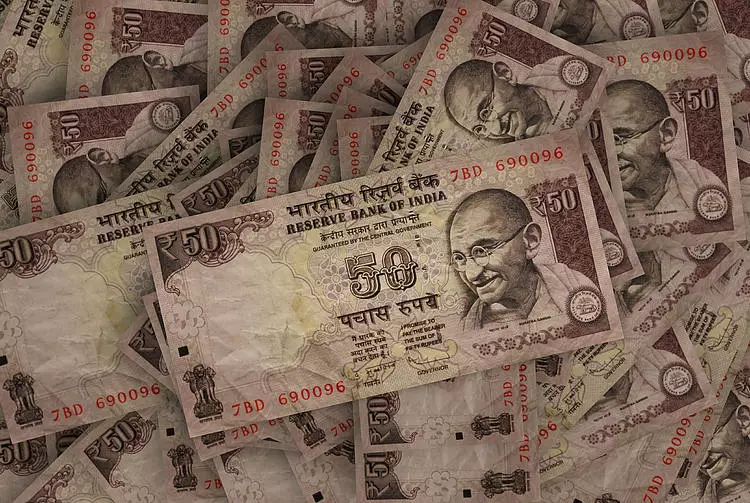In the Asian trading session on Tuesday, the Indian Rupee (INR) displayed a notable downturn, continuing a downward trend for the third consecutive day. A combination of renewed demand for the US Dollar (USD), fluctuations in crude oil prices, and foreign capital outflows have exerted pressure on the INR. This trend not only reflects the state of the currency but also underscores the broader economic dynamics at play, including geopolitical conflicts and central bank policies.
The market is currently fixated on key economic indicators, with both the HSBC India Manufacturing Purchasing Managers Index (PMI) and the US ISM Manufacturing PMI set to be released later in the day. These figures will likely influence market sentiment and the future trajectory of the INR, especially given the current vulnerability of the currency to external factors.
The persistent softness of the INR can largely be attributed to increased dollar demand from foreign banks, which highlights the currency’s sensitivity to global economic health and investor sentiment. Amid rising tensions in the Middle East, crude oil prices have also shown volatility, further complicating the situation for India’s currency by increasing the cost of imports—a significant contributor to India’s trade deficit.
Additionally, foreign fund outflows have intensified this pressure. The data indicating India’s current account deficit of $9.7 billion for the first quarter of FY25 (1.1% of GDP) points to underlying economic strains that are magnified by external financial turbulence. Such deficits typically weaken investor confidence, as they reflect an imbalance between a country’s exports and imports, thus fostering a bearish outlook for the local currency.
Shifting focus to the US, Federal Reserve Chair Jerome Powell emphasized that recent interest rate reductions should not be interpreted as a signal for aggressive future cuts. Instead, he suggested that upcoming decisions regarding interest rates would depend on economic conditions. The anticipated June cut, which has the market’s attention, could influence the USD’s strength against the INR. Projections reveal a 35.4% chance of a half-point cut in November, underscoring ongoing speculation regarding the direction of US monetary policy.
Interestingly, while the Indian market grapples with the implications of these external monetary decisions, it must also contend with internal economic metrics. The HSBC India Manufacturing PMI’s release could act as an important barometer for domestic economic performance, potentially impacting the INR depending on the figures reported.
As the INR remains on a weaker trajectory, the technical aspects of the USD/INR trading pair reveal key levels of support and resistance. The pair consistently remains above the 100-day Exponential Moving Average (EMA), which serves as a significant indicator of sustained bullish sentiment—highlighting the challenges the INR faces in reversing its fortunes. Currently, the psychological resistance level of 84.00 hampers progress, while breaching this threshold might propel prices towards 84.15 and 84.50.
Conversely, should the INR experience further declines, the 100-day EMA stands at 83.62 as initial support. In a bearish scenario, a closer examination reveals that sustained losses could push the currency down to the psychological support level of 83.00, marking a significant low point in the recent trend.
It is crucial to recognize the broader macroeconomic landscape impacting the Indian Rupee. The interplay between inflation rates, interest rates, GDP growth, and foreign investment flows substantially shapes currency valuations. India’s dependence on oil imports makes it particularly vulnerable to oil price fluctuations, while the condition of the global economy often dictates foreign investment trends.
The Reserve Bank of India (RBI)’s interventions in forex markets are critical in mitigating excessive volatility in the INR. Striving to stabilize the exchange rate to facilitate trade and maintain inflation within its target, the RBI’s policy decisions play a vital role. Notably, higher interest rates tend to strengthen the INR by attracting foreign capital through carry trades, which is pivotal as global investors seek the highest returns on their investments.
Likewise, the state of inflation—more pronounced than in peer nations—can lead to depreciation by highlighting economic weaknesses. However, should inflation trigger a response from the RBI in the form of rate increases, it could bolster the INR by providing a healthier yield for international investors.
The current predicament of the Indian Rupee illustrates the complexity of currency markets, fueled by both domestic and international forces. While the INR faces significant challenges from the strength of the USD and external economic pressures, opportunities exist for recovery through prudent macroeconomic policies and favorable shifts in global financial conditions. As traders and investors remain vigilant, the future path of the INR will depend heavily on how these intersecting factors evolve in the coming days and weeks.

